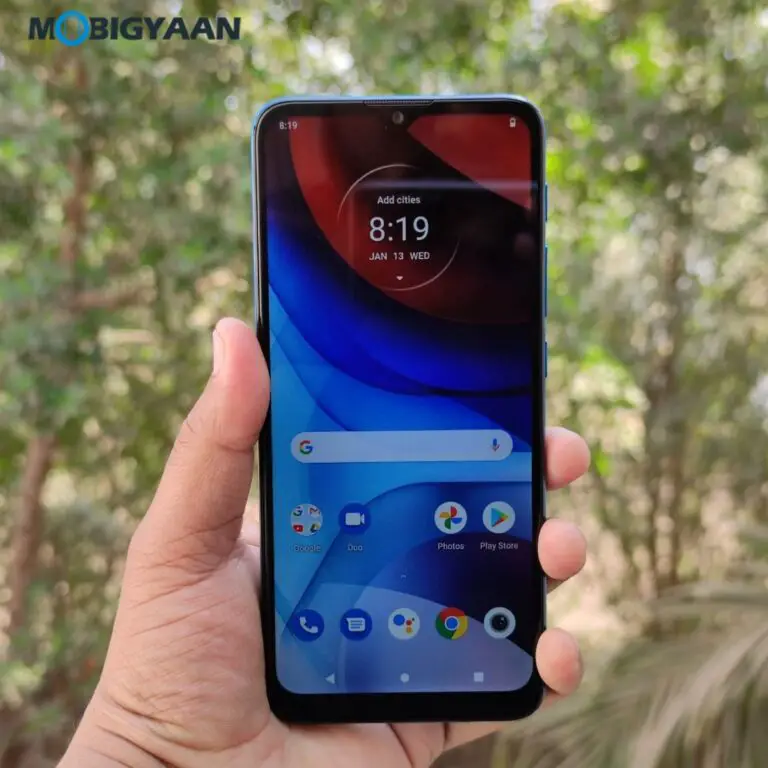Exynos 2100 vs Snapdragon 888: Samsung Galaxy S21 Ultra lasting performance and throttling test
Our in-depth look at the differences between the U.S. and international versions of the Samsung Galaxy S21 Ultra slowly turns into a regular editorial series.
Today in another edition of the Qualcomm Snapdragon 888 vs Exynos 2100, we take a closer look at sustained chipset performance and thermal throttling.
As usual - for context - Samsung has released two versions of its high-end smartphones - one with a Qualcomm chipset and another with its own Exynos chips. So, as usual, we're digging to find the potential differences between the two versions. In other words, is one more awesome than the other?
| chipset | Samsung Exynos 2100 | Qualcomm Snapdragon 888 |
| CPU | 1x 2,9 GHz - Cortex-X1, 3x 2,8 GHz - Cortex-A78, 4x 2,2 GHz - Cortex-A55 | 1x 2,84 GHz - Kryo 680 Prime (Cortex-X1), 3x 2,42 GHz - Kryo 680 Gold (Cortex-A78), 4x 1,8 GHz - Kryo 680 Silver (Cortex-A55) |
| Manufacturing node | EUV 5nm | 5 nm |
| GPU | Mali-G78 MP14 (14 cores) (Vulkan 1.1, OpenCL 2.0, DirectX 12) | Adreno 660 (Volcano 1.1, OpenCL 2.0, DirectX 12) |
| Memory medium | LPDDR5, 3200 MHz, max 50 Gbit / s, max size 16 GB | LPDDR5, 3200 MHz, max 50 Gbit / s, max size 16 GB |
| Storage room | UFS 3.1 | UFS 3.0, UFS 3.1 |
| Multimedia support | Maximum display resolution: 4096 x 2160, video capture: 8K @ 30fps, 4K @ 120fps; playbak: 8K at 60fps | Maximum display resolution: 3840 x 2160, video capture: 8K @ 30fps, 4K @ 120fps; playbak: 8K at 60fps |
| Neural processor (NPU) | Triple core NPU (up to 26 TOPS) | Hexagon 780 26 TOPS |
| Modem | LTE Cat. 24, up to 3000 Mbps down, 422 Mbps up; 5G SA / NSA / Sub6 / mmWave, up to 7,35 Gbps down, 3,67 Gbps up | LTE Cat. 22, up to 2500 Mbps down, 316 Mbps up; 5G SA / NSA / Sub6 / mmWave, up to 7,5 Gbps down, 3 Gbps up |
After first exploring the benchmark performance difference between the two chips inside an otherwise identical Galaxy S21 Ultra unit, we next compared the overall battery endurance. In both cases, the data was quite consistent and led to the conclusion that the two S21 Ultra variants work very similarly.
Of course, that was never going to be the full story. There is always a lot of finer detail to analyze. Even so, most of your really passionate comments on the matter continued to revert to the topics of thermal throttling and sustained performance in the ongoing top chip debate. So much so, in fact, that we thought it warranted further research on our part.
As before, we took our US Snapdragon 888 S21 Ultra unit and the EU Exynos 2100 model that we used for our in-depth review, and ran the exact same set of tests, with the exact same resolution settings - QHD and rate. cooling mode set to Auto.
CPU limitation test on the Exynos 2100 Galaxy S21 Ultra
CPU limitation test
The CPU Limit Test is a great app to start things off. However, a few important remarks are in order. What we're trying to get here is to put as much pressure on the chipset as possible. This is best achieved by hitting it with a long synthetic multi-core filler. We've looked at this in depth in the past and CPU cores remain the most important heat source in a chipset, with the GPU contributing little by comparison. Since the sustained performance in a passively cooled smartphone system depends almost entirely on thermal management, heat buildup, and thermal headroom, we have to torture the processor to get usable data. It's important to note, however, that this is not a realistic load in the real world. Even the toughest and most demanding Android games won't hit all CPU cores at the same time. Therefore, the numbers on the graphs should be viewed as the absolute worst-case scenarios.
CPU limitation test on the Snapdragon 888 Galaxy S21 Ultra
Let's summarize the numbers observed during the duration of the test, as shown in the screenshots above.
For the Snapdragon 888 unit, we got maximum, average and minimum performance of 250 353/210 296/192 271 respectively, which corresponds to 77% performance maintained for the duration of the one hour test.
| CPU throttling test results | MAX | MIN | WAY | RETAINED PERFORMANCE AFTER 60 MINUTES |
| Galaxy S21 Ultra (Snapdragon 888) | 250 353 | 210 296 | 192 271 | 77% |
| Galaxy S21 Ultra (Exynos 2100) | 244 339 | 195 471 | 137 807 | 56% |
Conversely, the Exynos 2100 managed: 244 339/195 471/137 807, which is equivalent to 56% retained performance. It is a substantial difference.
The Snapdragon 888 inside the Galaxy S21 Ultra maintains higher and more stable sustained processor performance under extended synthetic maximum load by the processor limiting test, compared to the Exynos 2100 model.
Looking at the graphics themselves, we can't help but notice that the two variants seem to take a slightly different approach to their performance curve, possibly due to a CPU governor tweak. The Snapdragon 888 unit appears to be trying to maintain a higher average performance for as long as possible, followed by a noticeable, steep drop point. In comparison, the Exynos 2100 seems to slow down much more gracefully and gradually. Generally, we would prefer the latter as it is less likely to cause sudden stuttering. However, there is also another way to look at it: the Exynos chip can maintain its peak performance for much shorter periods of time and is forced to start slowing down due to thermal stress sooner. Moreover, this sudden drop, marked in red on the graph, followed by a sudden rise is the worst case for stuttering.
Overall, when it comes to the CPU Throttling test app, it looks like the Exynos is struggling a bit more than its Snapdragon counterpart while maintaining slightly lower scores overall. We wouldn't read too much into the specific performance figures in this particular case because the two chips are comparable in short "burst" loads. These types of loads are also much more likely to occur in real life.
Consecutive Antutu executions
For our next round of testing, we wanted something more compound, so we turned to AnTuTu and opted to do 5 consecutive tests on each unit. We found this to be a good representation of the sustained behavior of each chip. Again, we won't be focusing too much on the particular numbers as we know the Snapdragon 888 and the Exynos 2100 can score quite close to each other in AnTuTu.
A more important aspect when analyzing today's test is how much performance the Exynos loses over time, compared to the much better sustained curve of the Snapdragon. Qualcomm's chip even started to take hold and gain ground for the final round. Fascinating stuff.
Finally, we also wanted to do our best to stress phones with a more GPU-centric workload, both out of curiosity and as a partial consistency check, to see if our current theory that the limitation is mainly related to the processor is always checked.
Indeed, we ended up with two lines much tighter, almost identical in behavior. Much like in our previous benchmark comparisons, we see that, at least initially, 3DMark's Vulkan test appears to favor the Mali-G78 MP14 GPU inside the Exynos 2100 over the Adreno 660 at the inside the Snapdragon 888.
The tides quickly turn in Qualcomm's favor as heat builds up and thermal regulation sets in. In a theoretical parallel setup, where the Exynos has better thermal management of the processor core, we wouldn't be surprised to see the Mali-G78 MP14 with remarkable, or at least measurable lead instead.
As it stands, however, under a heavier GPU workload situation, the Snapdragon 888 and Exynos 2100 versions of the Galaxy S21 Ultra remain very, very comparable in performance.
Latest Thoughts
What's the takeaway then? Well, at the end of the day, this whole debate is still purely academic, held out of curiosity, because in practical terms we still maintain that the two chips, as found in the two variants of the Samsung Galaxy S21 Ultra, deliver a very comparable. Certainly a lot more than what we've seen with some of Samsung's early flagship generations and especially its own chipsets. If nothing else, we can probably all agree with certainty that the Exynos 2100 is a massive and marked improvement over last year's Exynos 990.
As for declaring a token or the other ultimate winner here, well, the score seems to be overall in Qualcomm's favor. Especially if you plan to have extended gaming sessions on your Galaxy or if you just feel like calculating Pi in your spare time. Although again, the practical performance gap is not that big, and you can confidently grab the variant available in your country without worrying about missing out.



















